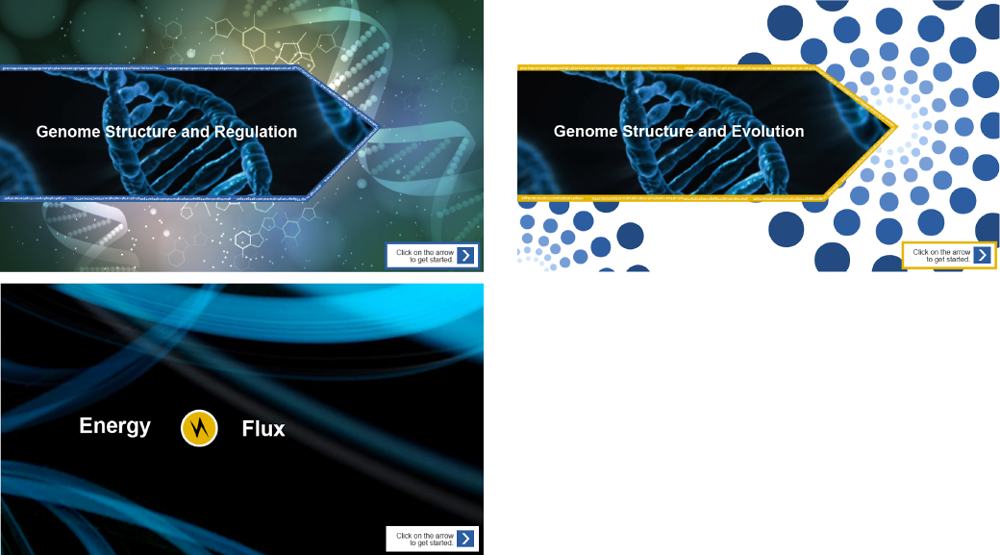
One of the units I worked on as part of the Learning Transformation team at Monash University, BIO1011, had an added level of complexity when the unit was selected to be part of a collaboration between Monash University and the University of Queensland (UQ). Together, we would need to create a set of online resources that would be used for first year Biology at both institutions.
I was responsible for creating three bespoke interactive modules that covered topics ranging from gene regulation and genomics to the process of energy creation. To do this, I worked with academics from both Monash and UQ to brainstorm ideas and create storyboards, and then I developed each module to their requirements.
One of the modules, Energy Flux, had many components and stakeholders involved. The content covered in the module is usually written in textbooks in a dense and complicated manner, which the academics I worked with believed were giving students more information than they would need or want. The drive for this module was to present the content simply and interactively, ensuring that students would grasp the essential concepts.
After brainstorming ideas, we realised that it would be the largest of the interactives, as there was a lot to cover. The module needed to demonstrate the processes involved in the creation of energy, have students identify energy creation expressed in graphs, correctly place the four key processes involved in the conversion of glucose to energy, and see how the processes and graphs combine as a whole. We also realised that the module would include techniques that were fairly new to the team and to the academics involved, which included creating videos using a lightboard, animations that occur after drag and drop interactions, and 2D animated graphs.
As we would be working in potentially new territory, I collaborated with my colleague to create prototypes at every stage of development to ensure that I would meet the academics' requirements, as well as more accurately estimate the time it would take to complete development of the module. Our biggest setback was the lightboard studio, which we wanted to use to capture video of the academic drawing diagrams on a glass screen, breaking down when we wanted to film. To mitigate the effect of this on our timelines I focused on creating the interactive components of the module first, while the lightboard was being worked on, and planned to create the video using other methods if the studio was still not usable. After a while of the studio being out of commission, I was given the green light to use it in manual mode, and learnt how to use the studio manually and control the entire setup while also working with the academic.
Despite the setbacks I faced when creating the module, and the relative complexity of all its components, the project was completed within the necessary timeframes and exceeded stakeholder expectations at both institutions.
